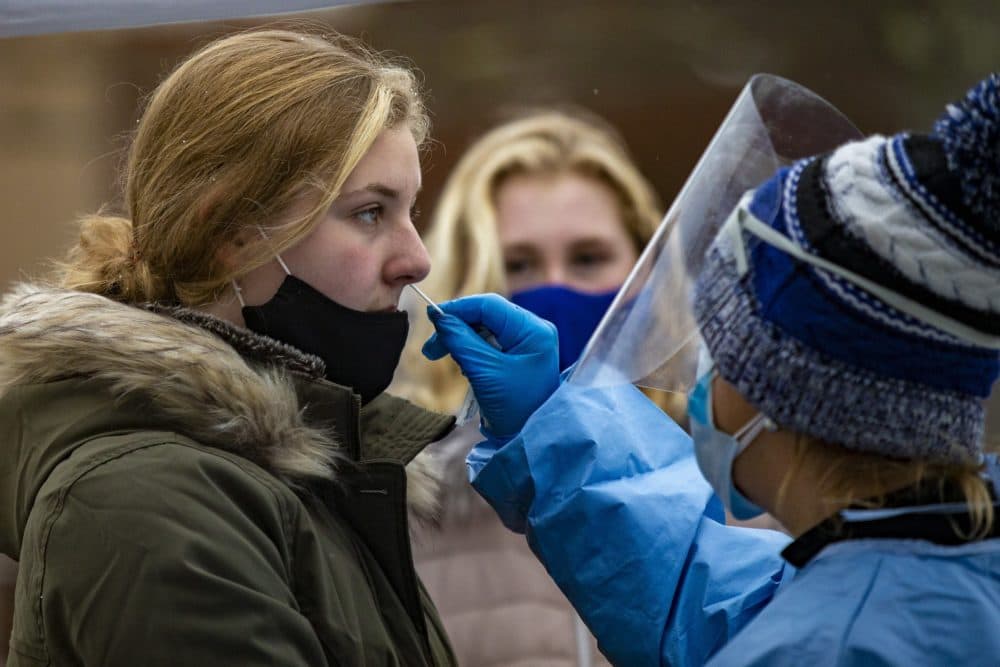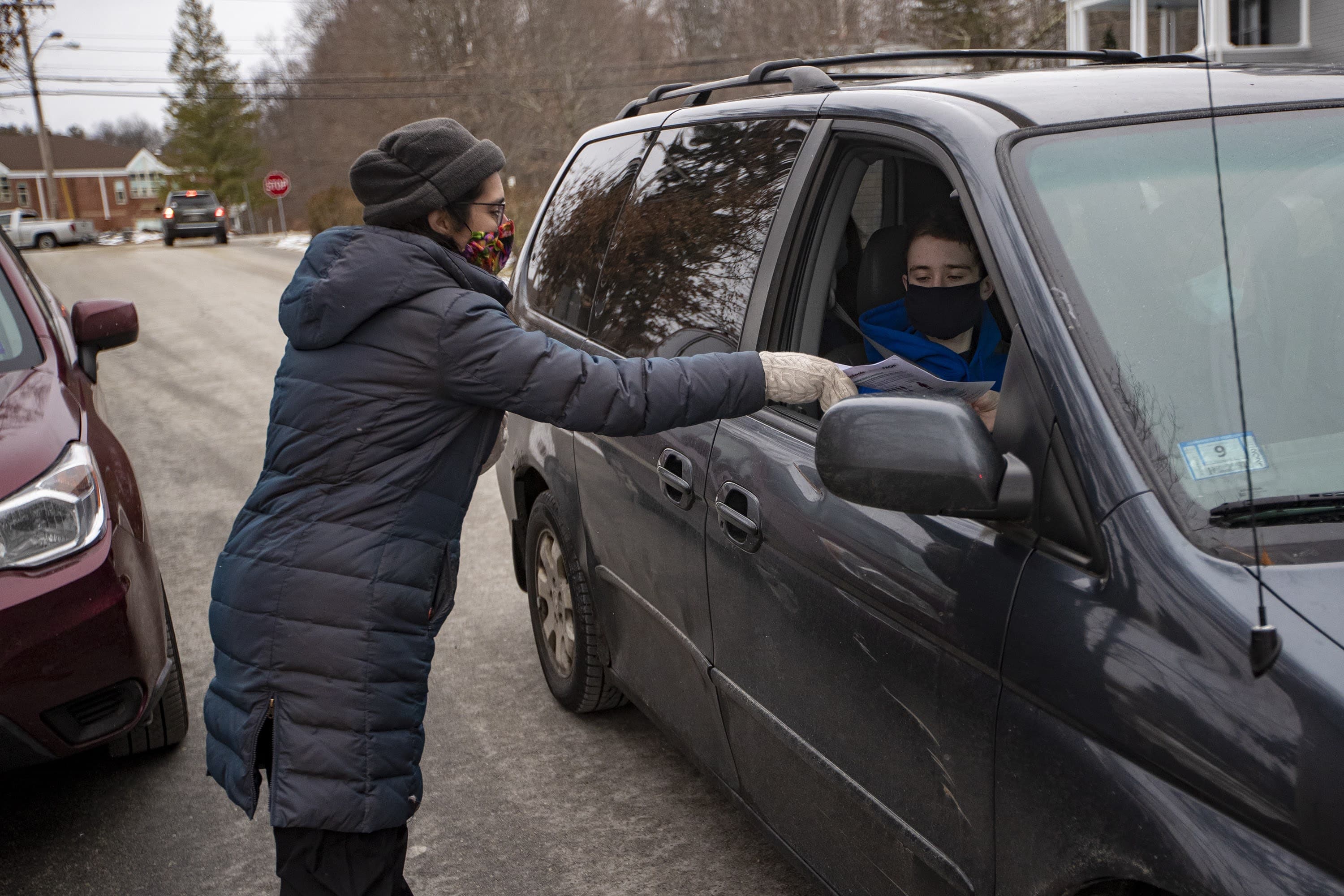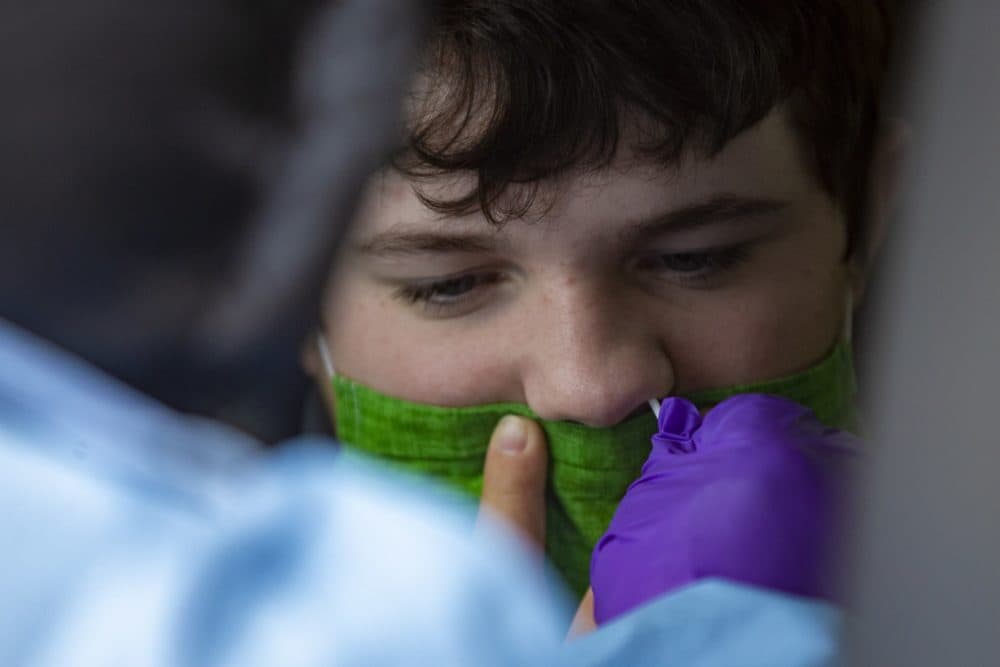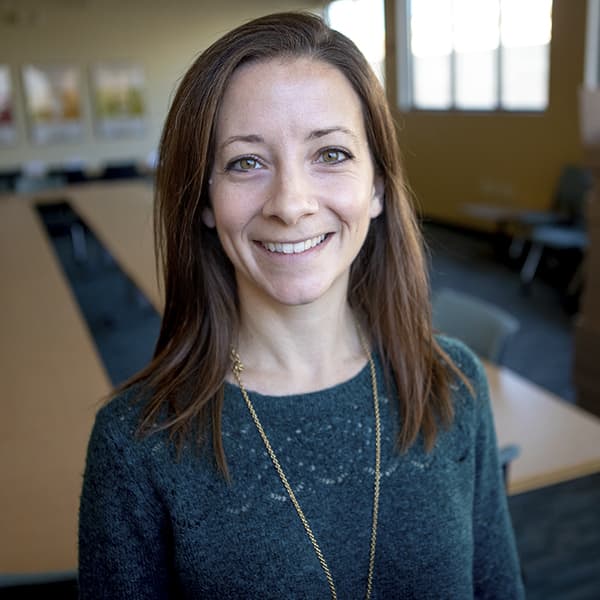Advertisement
Coronavirus Coverage
When It Comes To School COVID Testing, Finding Asymptomatic Cases Doesn't Come Cheap
Resume
It’s a snowy afternoon in early January and the carpool lane at the Bromfield High School in Harvard, Mass. is packed with cars. But the families inside aren’t here to drop off their kids. They’re here for COVID-19 tests.
"I'm going to just swab each side about four times around," says a healthcare worker to 13-year-old Emma Squire and her 16-year-old sister, Molly. The two girls look straight ahead as they get the test.
Emma says while it's very weird to see her school surrounded by people decked out in several layers of personal protective equipment, she’s glad so many students are here to get tested.
"I feel more safe now knowing solid facts about who has it," she says. "And that the people who have it are not at school. So it's keeping everything safer."
On the other side of the school, parent Liz Ruark is catching families on their way in. She’s directing traffic and handing out information packets about the school's testing program.

She’s also raising money.
"There’s also information in there about how to donate so we can keep the program going through the rest of the school year," Ruark explains to a parent before pointing her to the traffic cone she'll be passing.
As Massachusetts plans to roll out weekly COVID-19 testing to public school students and staff, districts that already have similar programs in place say it takes a lot of coordination and human power to keep it going.
Harvard Public Schools is among a handful of districts that took it upon themselves to launch a COVID-19 surveillance testing programs over the last few months. In Harvard, the plan at first was to offer the program by fundraising for the tests. So far, Ruark and her team have raised about $30,000 -- enough for three weeks of testing.

But more help for districts like Harvard as well as those eyeing the possibility of surveillance testing is expected soon. Massachusetts districts are expected to get almost four times more federal aid this year than they did last year. The state is offering to provide districts six weeks of funding for tests if they choose a state contract.
"We've always had testing solutions," says Russell Johnston, senior associate commissioner with the Department of Elementary and Secondary Education. "And now this is perhaps the most broad scale of the solutions."
Johnston says getting to this point took the state some time because officials had to make sure there was enough lab space to handle such a large influx of tests, among other things.
"But we also want to make sure that it's effective," he says. "That we won't kind of overpromise and under deliver in any way, shape or form."

Infectious disease experts argue surveillance testing is generally considered a bonus layer of protection — used in addition to other safety measures like masking, distancing, and ventilation. Nira Pollock, the associate medical director of the infectious diseases diagnostic lab at Boston Children’s Hospital, explains that now could be a more useful time to roll out surveillance testing programs since coronavirus cases are increasing across the state.
"The consensus is that as case rates rise, that it becomes ... potentially worth the significant cost both on the financial and operational level," says Pollock.
The superintendent of Watertown Public Schools, Deanne Galdston, can attest to that. She explains that while community rates are around 4.9%, surveillance testing has shown that school rates are much lower — around 0.2%.
"It is definitely a strong point to say that, through our testing, we’re not finding the prevalence of the virus in schools that we’re seeing in the community," Galdston says. "And that is very reassuring to families and staff that — it’s OK, we can be in school."
Wellesley Public Schools superintendent David Lussier adds getting to that point isn’t easy. Getting his district's surveillance testing program to run smoothly has required intense planning and a lot of human power over the last few months.
"We couldn’t do it with only the staff we have," Lussier explains. "We have an incredible group of volunteers. And unless you have that broad based support, to not just get something up and running but then to help manage it over time, it’s going to be very challenging to do this."
And even with a large influx of federal dollars, superintendents still have a lot of extra costs to fit in their budget, like PPE, new ventilation systems, and extra staff. And testing is just adding to that mountain of costs.
This segment aired on January 19, 2021.
